Discover 20 hidden attractions, cool sights, and unusual things to do in Oviedo (Spain). Don't miss out on these must-see attractions: Santa María del Naranco, San Miguel de Lillo, and Cámara Santa. Also, be sure to include Oviedo Cathedral in your itinerary.
Below, you can find the list of the most amazing places you should visit in Oviedo (Asturias).
Table of Contents
Santa María del Naranco
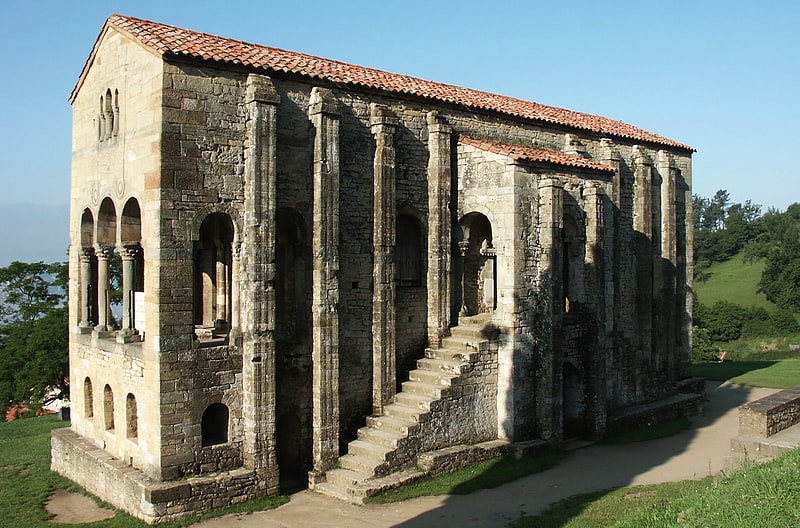
Preserved church from the 9th century. The church of St Mary at Mount Naranco is a pre-Romanesque Asturian building on the slope of Mount Naranco situated 3 kilometres from Oviedo, northern Spain. Ramiro I of Asturias ordered it to be built as a royal palace, part of a larger complex that also incorporated the nearby church of San Miguel de Lillo, 100 meters away. The palace was completed in 842 and had in part a religious function, being consecrated in 848. Its structural features, such as the barrel vault—with transverse ribs corresponding one-to-one with contraforts at the exterior, make it a clear precursor of the Romanesque construction. The exterior decorations, as well as the use of stilted arches mark the intended verticality of the composition.
It was declared a Monumento Nacional on 24 January 1885. Along with all other national monuments of Spain, it was classified as a Bien de Interés Cultural in June 1985. It was declared a World Heritage Site by UNESCO in December 1985.[1]
Address: Monte del Naranco, 33012 Oviedo
San Miguel de Lillo
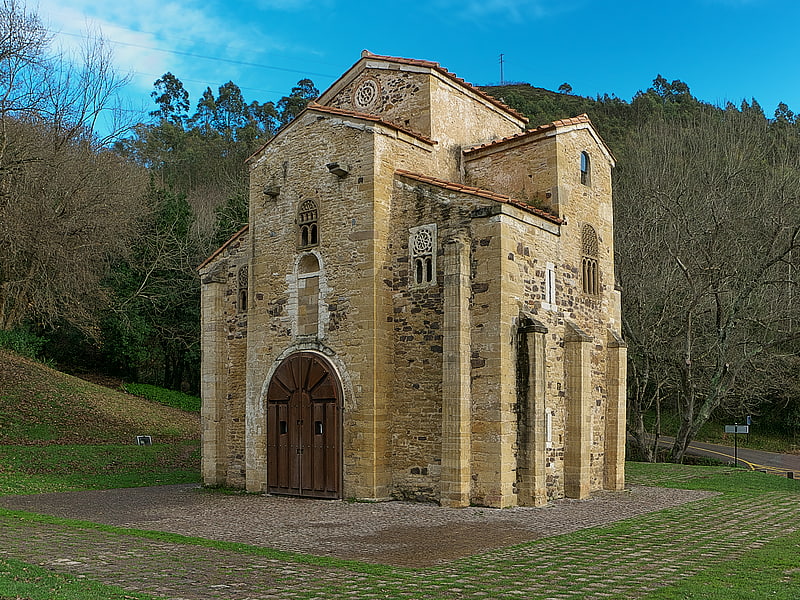
Small stone church from the 800s CE. St. Michael of Lillo is a Roman Catholic church built on the Naranco mount, near the Church of Santa María del Naranco in Asturias. It was completed in 842 and it was consecrated by Ramiro I of Asturias and his wife Paterna in the year 848. It was originally dedicated to St. Mary until this worship passed to the nearby palace in the 12th century, leaving this church dedicated to Saint Michael. It has been a UNESCO World Heritage Site since 1985.
It originally had a basilica ground plan, three aisles with a barrel vault, although part of the original structure has disappeared as the building collapsed during the 12th or 13th century. Nowadays, it conserves its western half from that period, together with several elements in the rest of the church such as the fantastic jambs in the vestibule or the extraordinary lattice on the window of the southern wall, sculpted from one single piece of stone.[2]
Address: Av. de los Monumentos, 33194 Oviedo
Cámara Santa
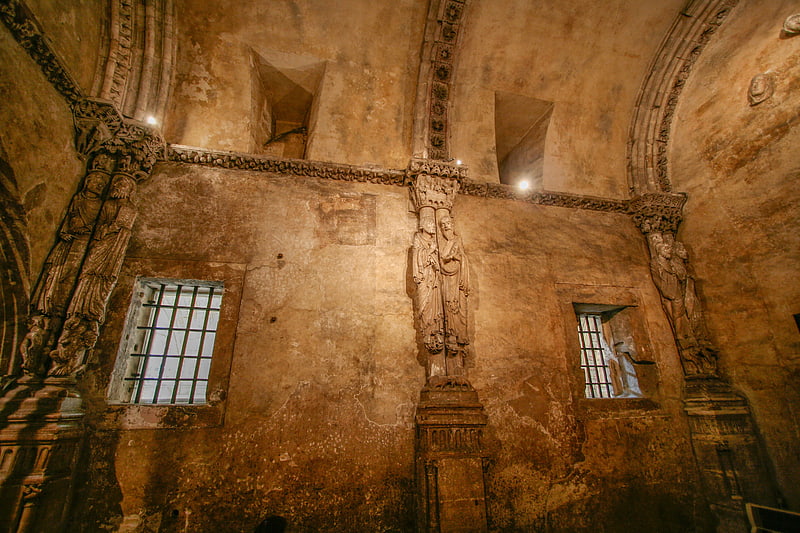
Chapel. The Holy chamber of Oviedo is a Roman Catholic pre-Romanesque church in Oviedo, Spain, built next to pre-romanesque Tower of San Miguel of the city's cathedral. Nowadays, the church occupies the angle between the south arm of the cathedral transept and a side of the cloister.
It was built during the 9th century as a palace chapel for King Alfonso II of Asturias and the church of San Salvador of Oviedo. Apart from acting as royal chapel, the Holy Chamber was built to house the jewels and relics of the cathedral of San Salvador in Oviedo, a function it continues to have 1200 years later. Some of these jewels were donated by the Kings Alfonso II and Alfonso III, and represent extraordinary gold artifacts of Asturian Pre-Romanesque, brought from Toledo after the fall of the Visigothic kingdom.
Consequently, the cathedral of Oviedo was also called Sancta Ovetensis; owing to quantity and quality of relics contained in the Cámara Santa (English: Holy Chamber). The Holy Chamber remains as the only sample of the early medieval complex. It was built as a relics' room to keep the different treasures associated with the Kingdom of Asturias (Cross of the Angels, Victory Cross, Agate box, Arca Santa and Sudarium of Oviedo), brought from Jerusalem to Africa, and after several translations was finally deposited at Oviedo by Alfonso II of Asturias.
It was declared a World Heritage Site by UNESCO in December 1998.[3]
Oviedo Cathedral
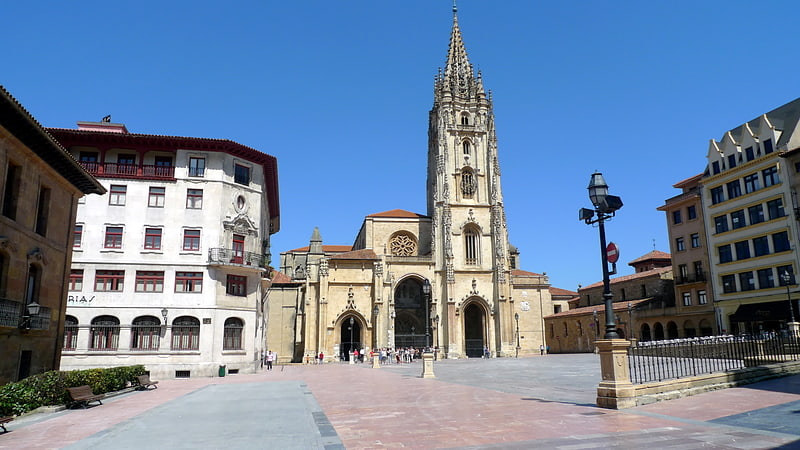
Also known as: Catedral de Oviedo
Cathedral in Oviedo, Spain. The Metropolitan Cathedral Basilica of the Holy Saviour or Cathedral of San Salvador is a Roman Catholic church and minor basilica in the centre of Oviedo, in the Asturias region of northern Spain.
The Cathedral of San Salvador of Oviedo today displays an array of architectural styles, from Pre-Romanesque to Baroque, including Romanesque, Gothic and Renaissance parts.[4]
Address: Plaza Alfonso II "el Casto", s/n, 33003 Oviedo
San Julián de los Prados
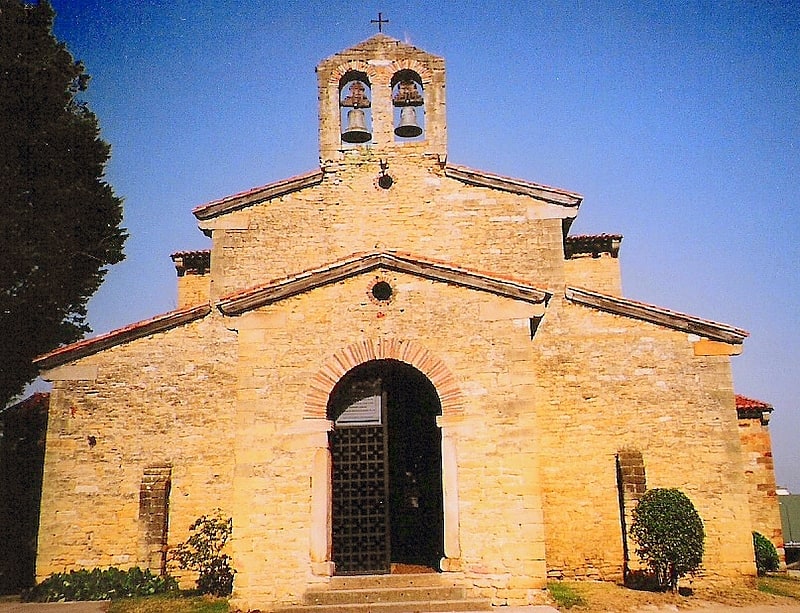
Church from the 800s with noted murals. San Julián de los Prados, also known as Santullano, is a Pre-Ramirense church from the beginning of the 9th century in Oviedo, the capital city of the Principality of Asturias, Spain. It is one of the greatest works of Asturian art and was declared an Historical-Artistic Monument by the Spanish Ministry of Culture in June 1917 and a World Heritage Site by UNESCO on 2 December 1998.
The church's construction was ordered by Alfonso II of Asturias and it was built by the court architect Tioda c. 830. It is dedicated to the martyred Egyptian saints Julian and Basilissa.[5]
Address: Calle Selgas, 2, 33011 Oviedo
Estadio Carlos Tartiere

Stadium in Oviedo, Spain. Estadio Municipal Carlos Tartiere is a multi-use stadium in Oviedo, Spain. With a capacity of 30,500 seats, it is the 17th-largest stadium in Spain and the largest in Asturias. The new Carlos Tartiere replaced the former stadium of the same name built in 1932, as the home venue of Real Oviedo. The stadium has held three games of the Spain national football team, one game of the Spain national under-21 team and another one of the Asturian autonomous team.[6]
Address: C. Ricardo Vázquez Prada, s/n, 33013 Oviedo
Museo Arqueológico de Asturias
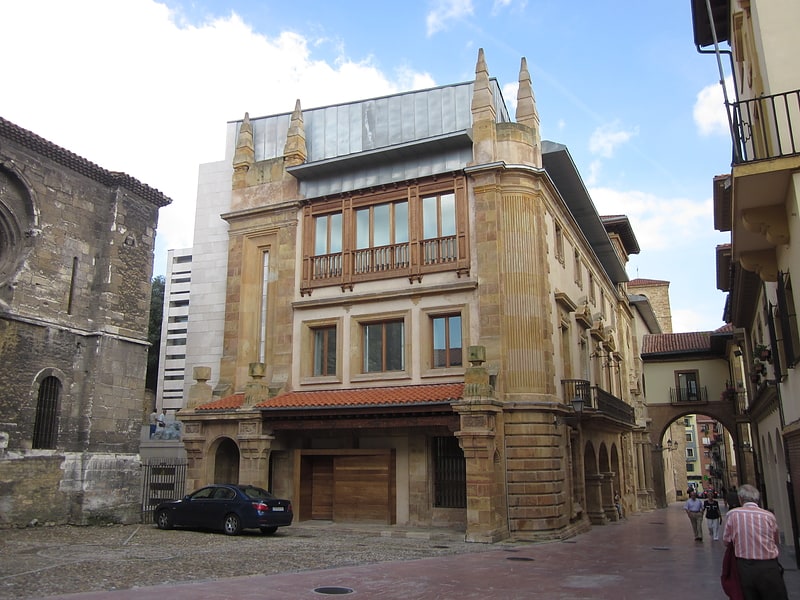
Monastery in Oviedo, Spain. The Archaeological Museum of Asturias is housed in the 16th century Benedictine monastery of Saint Vicente in Oviedo, Asturias, Spain. Its findings include collections of the Asturian Neolithic, Megalithic, Bronze Age, Iron Age, Astur hill fort culture, Roman period, and of the Gothic, Pre-Romanesque and Romanesque periods of the Kingdom of Asturias. The museum also includes sections of Asturian Ethnography, Heraldry, Medieval and Modern Epigraphy, Spanish Numismatics, a European Medal Section, and Armor.
While owned by the Spanish State, its management was transferred to the regional administration in 1991.
The museum underwent a series of refurbishment works beginning in 2004, being reinaugurated and reopened to the public on March 21, 2011.[7]
Address: Calle San Vicente, 3, 33003 Oviedo
Plaza de la Escandalera
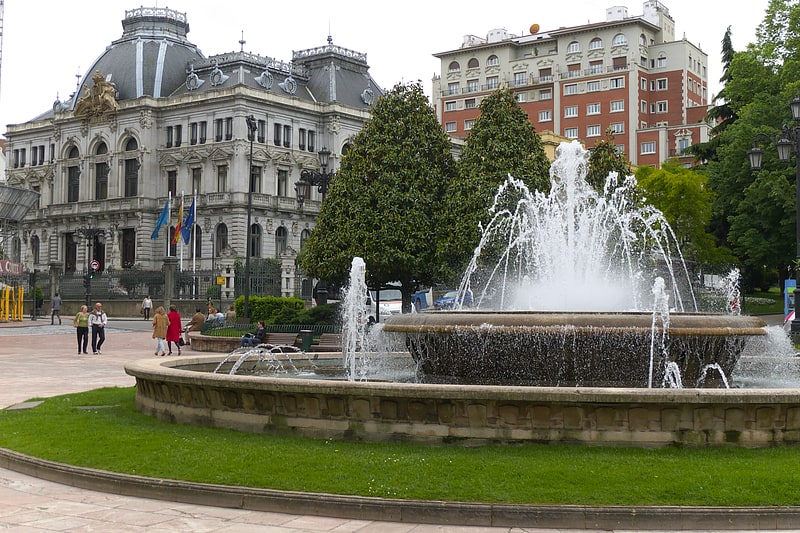
Plaza de la Escandalera is a plaza in Oviedo, Asturias, Spain. Its location between the historic and commercial centres of the city makes it a popular area to walk through.
The statue "Maternity" (La Maternidad) by Colombian-artist Fernando Botero is located in the plaza.[8]
Camposagrado Palace
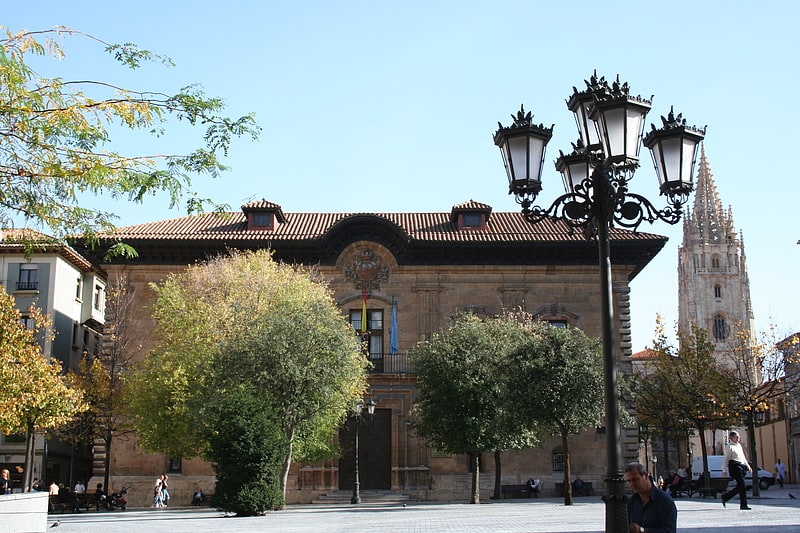
Also known as: Palacio de Camposagrado
Palace in Oviedo, Spain. Camposagrado Palace is a baroque and Neo-classical palace located in the town of Oviedo, in Asturias, Spain. The building dates back to the eighteenth century and was built for the Marquis de Camposagrado, José Manuel Bernaldo de Quirós.
The architecture is an integration of styles and architects. Typically for urban palaces, it is a square building organized around a courtyard, with four façades of masonry walls lined with sandstone blocks and decorated with traditional quoins at the corners. The lower level was begun by Francisco de la Riva Ladrón de Guevara around 1728 and is principally built in the Baroque style. The upper floor began in 1744 by the architect Pedro Antonio Menéndez de Ambás and is distinguished by the Neo-Classical style, articulated with Ionic columns and rusticated blocks at the corners. The building has dual entryways—one from the side of Valdecarzana Palace on San Juan Street and the other from Porlier Square. Both entrances led to massive staircases heading upwards.
In 1934, during social upheaval of the Asturian miners' strike of 1934, the building was burned and had to be rehabilitated. The architect Enrique Rodríguez Bustelo completed the repairs and on 26 May 1943 it was declared a historic monument.
It presently houses the Regional Court of Asturias.[9]
Address: Plaza Porlier, 30003 Oviedo
Monte Naranco
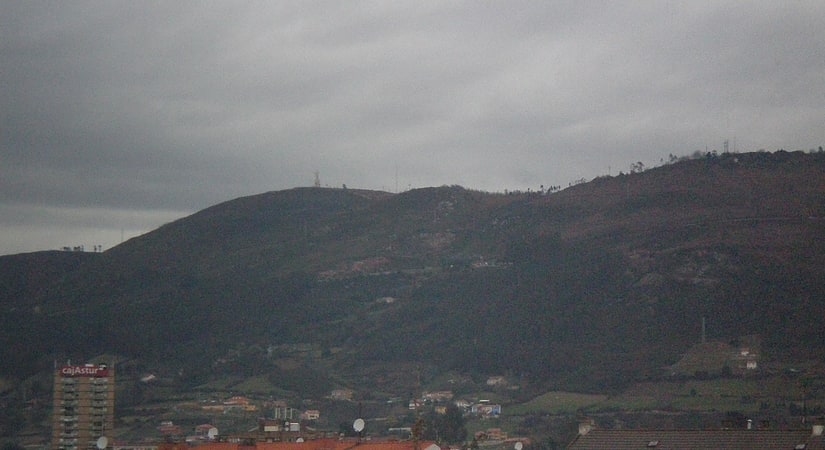
Mountain in Spain. Monte Naranco is a mountain in Oviedo, Spain. The church Santa María del Naranco is situated on its slopes. It is also known as the finishing line for the bicycle races Subida al Naranco and Vuelta a España.[10]
Address: Avenida de los Doctores Fernandez-Vega, Oviedo
San Juan el Real

Basilica in Oviedo, Spain. Iglesia de San Juan el Real is a church in Oviedo, Asturias, Spain. It was established in 1912. Francisco Franco was married in the church in 1923.
Additional historical detail, from the source (translated from Spanish):
The foundation of the church building was started in 1912 on a site that had been occupied by another church that was demolished in 1882 with design by architect Luis Bellido being completed in 1915. The church has a Latin cross with side chapels and dome.
PARISH SAINT JOHN THE REAL OVIEDO. As composed by history, Alfonso III the Great built in the year 862 an altar dedicated to San Juan Bautista, next to his palace, which in 1006 was donated by Alfonso VI. A hospital for the poor was established and pilgrims came.. the date not materialized for the first parish church of the parish of San Juan el Real.
In November 2014, as the present church building was about to celebrate its 100th anniversary, the Pope elevated the status of this historic place of worship from church (Iglesia de San Juan el Real) to a minor Basilica. Today we can properly refer to el Parroquia de San Juan el Real. Source:[11]
Address: Calle Dr. Casal, s/n, 33001 Oviedo
Museo de Bellas Artes de Asturias
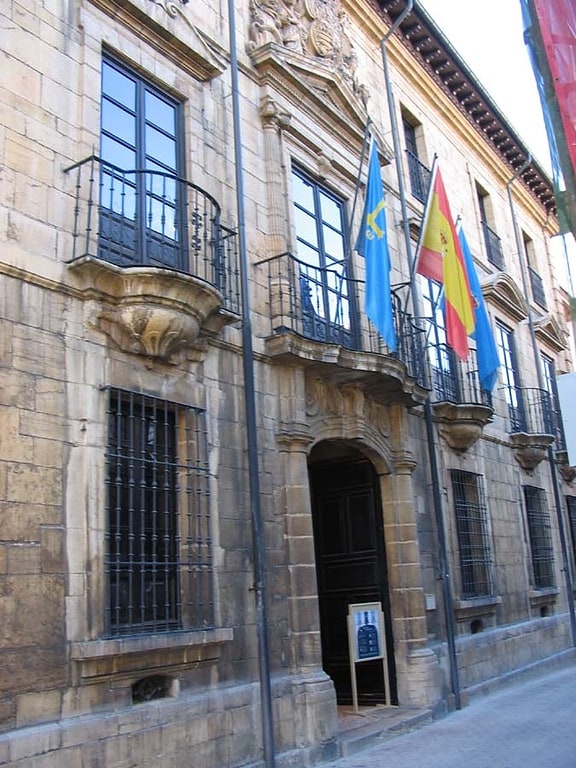
European fine art from several centuries. The Museum of Fine Arts of Asturias is a museum in Oviedo, Asturias, Spain. It is situated within three buildings: the Palacio de Velarde, the House of Oviedo-Portal, and the House of Solís-Carbajal. The museum was conceived on 13 June 1844, by Royal Decree, and inaugurated 19 May 1980, from the art collection owned by the former province of Oviedo. It now depends on funding from the Culture Department of Asturias, and the City of Oviedo.
An expansion project is underway by the museum's architect, Francisco Beloqui Mangado.[12]
Address: Calle Sta. Ana, 1-3, 33003 Oviedo
San Isidoro
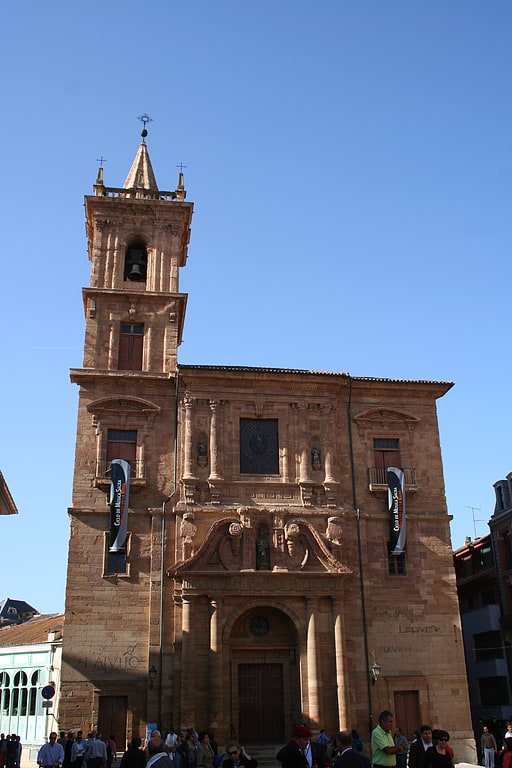
Church in Oviedo, Spain. Iglesia de San Isidoro is a church in Oviedo, Asturias, Spain. It was opened in 1587.[13]
Address: Plaza de la Constitución, 2, 33009 Oviedo
Capilla de la Balesquida
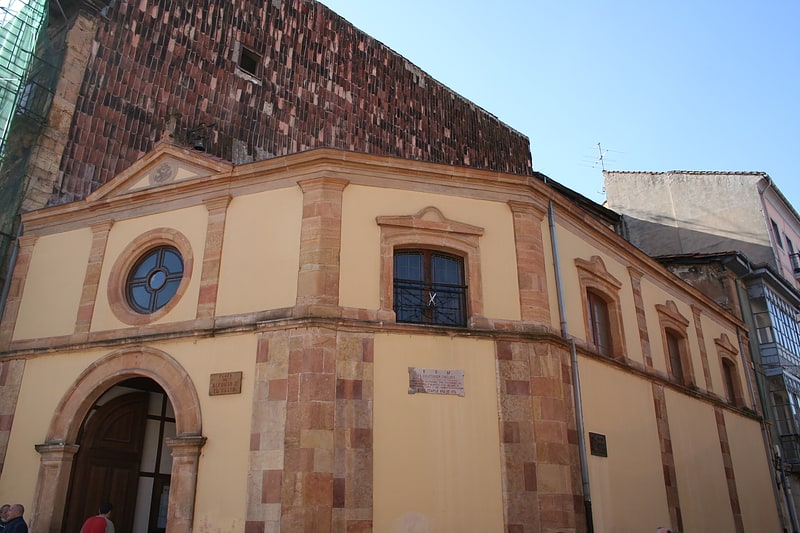
Chapel in Oviedo, Spain. Capilla de la Balesquida is a church in Asturias, Spain. The church was established in 1232.[14]
Address: Plaza Alfonso II el Casto, 16, 33003 Oviedo
San Tirso

Church in Oviedo, Spain. The Church of Saint Thyrsus is a Roman Catholic Asturian Romanesque church situated in Oviedo, in Asturias, northern Spain. The church was established in the 790s. Dedicated to Saint Thyrsus, it was built by Tioda, the royal architect of Alfonso II of Asturias. The Great Fire of Oviedo in 1521 and rebuilding in the 18th century removed most of the original church, except for a three-light window.[15]
Address: Plaza Alfonso II el Casto, 4, 33003 Oviedo
Church of Santa María de Bendones

Also known as: Iglesia de Santa María
Building in Bendones, Spain. St. Mary of Bendones is an Asturian Pre-Romanesque Roman Catholic church situated in Bendones, Spain, build between 792 and 842.
It was designated a Spanish National Monument in 1958. It has an arcade with side chapels as well as a three-part head with a large transept.[16]
Address: 1 Plaza de San José, Oviedo
Santa María de la Corte
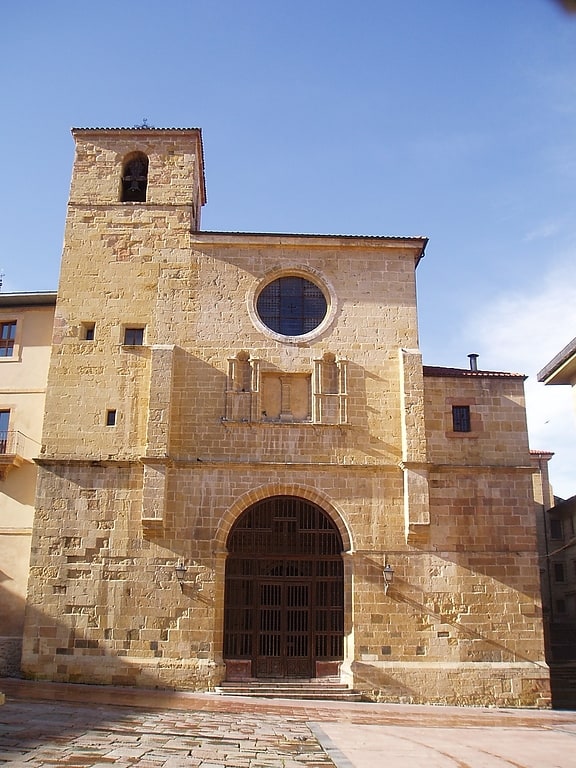
Parish in Oviedo, Spain. The Iglesia de Santa María La Real de La Corte is a church in Oviedo, Asturias, Spain. It was established in the mid 16th century.[17]
Monastery of San Vicente de Oviedo
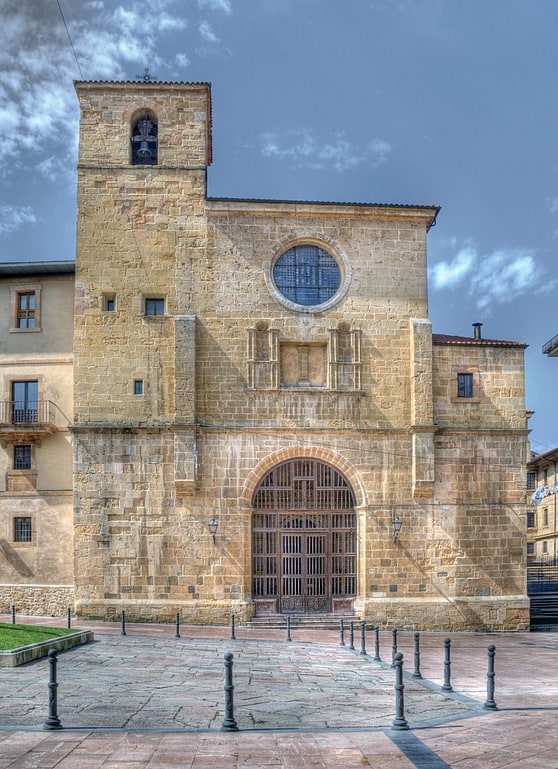
Also known as: Monasterio de San Vicente
Monastery. San Vicente de Oviedo is a church and monastery in Oviedo, Spain. Its foundation, in 761, is recorded in a charter known as the Pacto monástico de Oviedo a copy made in the 12th century of the original that is dated 25 November 781 and is considered the earliest document on the monarchy of the Kingdom of Asturias, although doubts exist as to the veracity of this document since the monastery, also called Antealtares in the Middle Ages, is not mentioned again until 969. According to the charter of 781, twenty years before, in 761, the monks Máximo, with his serfs, and Fromestano, founded a church in locum quod dicunt Oveto, which was to become the city of Oviedo. Fromestano and Maximo are considered the founders of the city and church. Fromestano in the charter of 781, describes its founding:
I, Frómista (Fromestano), abbot for the past twenty years, together with my nephew Máximo the monk, settled in this place, abandoned and uninhabited, founding a basilica in honor of Saint Vincent, a martyr of Christ and a deacon.
Transformed into a monastery, the first abbot was Oveco, documented between 969 and 978, and the first reference mentioning that it followed the Benedictine Rule is dated in 1042.
The style of the building is Romanesque, although reworked in the 11th and 12th centuries. Its cloister is an official National Historic and Artistic Monument and since 1952 houses the Archaeological Museum of Asturias.[18]
Santo Domingo
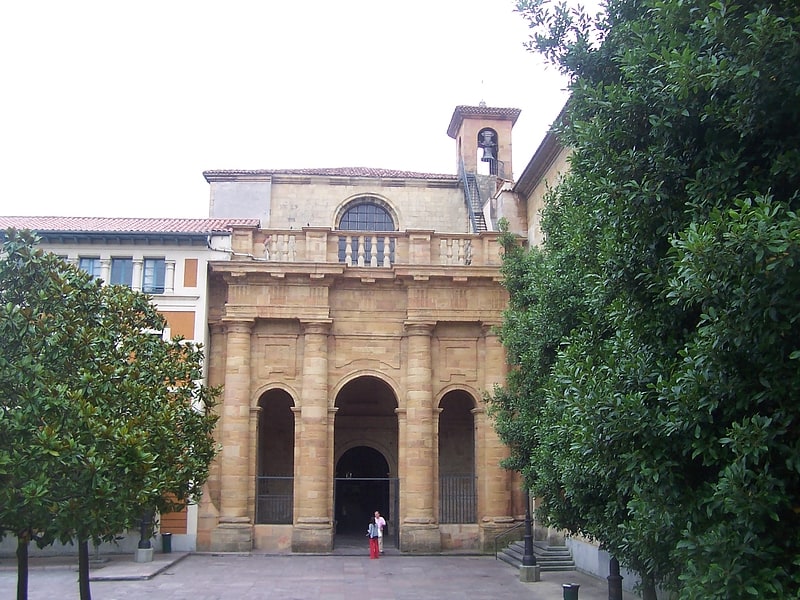
Catholic church in Oviedo, Spain. Iglesia de Santo Domingo is a church in Oviedo, region of Asturias, Spain. It was established in 1518.[19]
Address: Calle San Pedro de Mestallón, 3, 33009 Oviedo, Asturias, Oviedo
La Foncalada
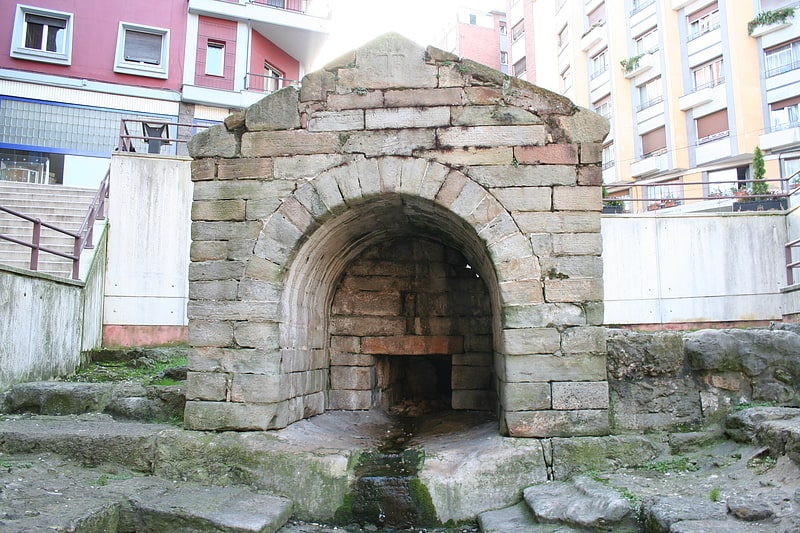
Also known as: Foncalada
Historical landmark in Oviedo, Spain. The Foncalada is a fountain of potable water located outside the city walls of Oviedo, Asturias, Spain; it was built by king Alfonso III of Asturias in the 9th century. This building remains the only surviving civil architectural item for public use of the Early Middle Ages. Its name was given after the inscription in Latin: fontem calatam written on it. Built in Pre-Romanesque style, it has been included with other Asturian Pre-Romanesque sites on the UNESCO World Heritage Site List since 1998.
It was originally placed near the city walls, next to an ancient Roman road. The decoration on top depicts the Victory Cross, symbol of Asturias.[20]
Address: Calle Foncalada, Esquina Con Calle Gascona, 33002 Oviedo